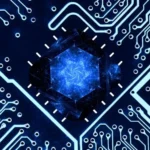In the ever-expanding landscape of energy solutions, nanoscale energy harvesting has emerged as a groundbreaking approach to harnessing and utilizing energy at the smallest scales. This article delves into the expansive realm of nanoscale energy harvesting, unveiling its significance, tracking the evolution of key technologies, examining its potential applications, and envisioning its transformative possibilities for the future.
The Significance of Nanoscale Energy Harvesting
Nanoscale energy harvesting is not merely a technological curiosity but a paradigm shift in how we think about and utilize energy. At the nanoscale, where materials exhibit unique properties, energy harvesting opens up new possibilities for tapping into ambient energy sources that were previously untapped.
Harvesting Energy from Microenvironments
At the core of nanoscale energy harvesting is the ability to capture and convert energy from microenvironments. It could include harvesting energy from vibrations, thermal gradients, or even sunlight at the nanoscale level, where the laws of classical physics give way to quantum effects.
Microscale and Nanoscale Devices
It enables the development of microscale and nanoscale devices that can operate autonomously by scavenging energy from their surroundings. These devices, often referred to as nanogenerators, hold the potential to power sensors, medical implants, and other low-power electronic devices.
Efficiency and Sustainability
Efficiency and sustainability are key aspects of nanoscale energy harvesting. By tapping into ambient energy sources at the nanoscale, the approach offers a sustainable and eco-friendly way to power small-scale electronic devices without relying on traditional energy sources.
Evolution of Key Technologies in Nanoscale Energy Harvesting
The journey of nanoscale energy harvesting is intricately woven with technological advancements that continually push the boundaries of energy capture and conversion at the smallest scales.
Piezoelectric Nanogenerators
Piezoelectric nanogenerators are at the forefront of nanoscale energy harvesting technologies. These devices utilize the piezoelectric effect, where certain materials generate electric charge in response to mechanical stress or vibrations. Nanoscale versions of these generators can convert tiny mechanical movements into electrical energy.
Thermoelectric Nanogenerators
Thermoelectric nanogenerators leverage temperature differentials at the nanoscale to generate electricity. These generators can convert small temperature variations into electrical power by exploiting the Seebeck effect, where a temperature gradient across a material induces a voltage.
Photovoltaic Nanoscale Energy Harvesting
Nanoscale photovoltaic devices capture and convert light energy at extremely small scales. These devices, often made of nanomaterials such as quantum dots or nanowires, hold the potential to harvest solar energy even in low-light conditions, making them versatile for a range of applications.
Potential Applications of Nanoscale Energy Harvesting
Nanoscale energy harvesting opens up many potential applications across various sectors, offering innovative solutions to power small-scale devices in diverse environments.
Internet of Things (IoT) Devices
It is particularly promising for powering IoT devices. Tiny sensors, actuators, and communication modules embedded in the IoT ecosystem can benefit from nanogenerators, enabling them to operate with minimal or no external power sources.
Biomedical Implants and Wearable Devices
In healthcare, it holds the potential to power biomedical implants and wearable devices. These devices can harvest energy from the body’s movements or temperature differentials, providing sustainable power sources for continuous monitoring and therapeutic applications.
Autonomous Microscale Robots
Nanoscale energy harvesting is crucial for the development of autonomous microscale robots. These tiny robots can navigate complex environments, perform tasks, and communicate with each other, all powered by the ambient energy they harvest from their surroundings.
Transformative Potential and Future Outlook
The trajectory of nanoscale energy harvesting points towards a future filled with continued innovation, integration, and unprecedented possibilities.
Quantum Energy Harvesting
Integrating quantum principles into energy harvesting holds the potential for even more efficient and novel approaches. Quantum energy harvesting could exploit quantum states of materials to extract energy, opening new frontiers in the field.
Integration with Nanotechnology and Materials Science
The future of nanoscale energy harvesting involves a closer integration with nanotechnology and materials science. Advances in designing nanomaterials with tailored properties will lead to more efficient nanogenerators and enhanced capabilities for energy harvesting.
Environmental Sensing and Monitoring
Nanoscale energy harvesting is poised to play a crucial role in environmental sensing and monitoring. Tiny, self-powered sensors can be deployed in remote locations to gather environmental data, contributing to climate science, ecology, and more research.
Conclusion
Nanoscale energy harvesting has evolved from a concept to a transformative force with far-reaching implications for powering small-scale electronic devices. As we navigate the energy landscape of the future, the transformative potential of nanoscale energy harvesting is both exciting and profound. With the continued integration of cutting-edge technologies, a commitment to sustainability, and a focus on exploring new applications, nanoscale energy harvesting will remain a driving force in reshaping how we harness energy at the smallest scales, unlocking new possibilities, and redefining the future of autonomous and sustainable electronic devices.












